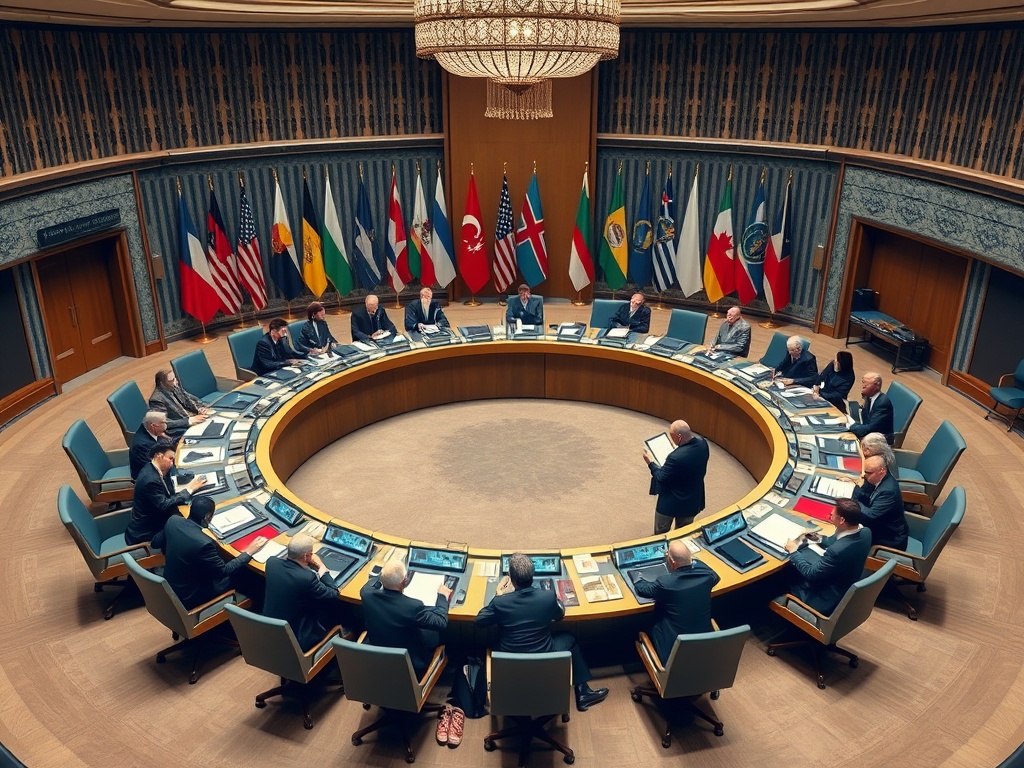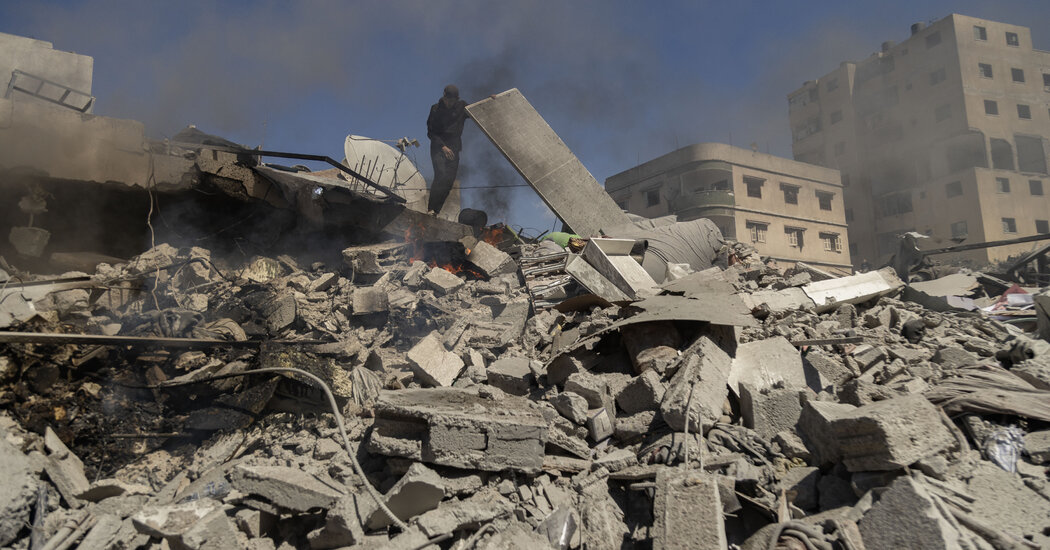Washington and Kyiv: Striving for Peace Amidst Tensions

Despite the whirlwind of discussions between the US and Ukrainian leadership this week, both Washington and Kyiv seem dedicated to pursuing a peace agreement. However, the stark contrasts between US demands and Ukrainian willingness to compromise, compounded by Donald Trump’s perplexing support for Russia, suggest that achieving such a deal may be exceedingly challenging, if not entirely unfeasible.
“Nobody was expecting this,” remarked global affairs analyst Fareed Zakaria, commenting on the US’s apparent alignment with what he termed an “aggressive dictator.” “This is a breathtaking reversal in US foreign policy,” he added.
Diplomatic efforts continue across the Atlantic, with White House National Security Adviser Mike Waltz urging Ukrainian President Volodymyr Zelensky to “tone down” his rhetoric and “sign that deal.” This potential agreement would reportedly require Ukraine to allocate 50% of its revenue from rare earth minerals and other natural resources to the US, according to Zelensky. Yet, even if a consensus is reached among the US, Ukraine, and Russia in the near future, apprehensions linger that the underlying tensions could persist, possibly escalating into a wider conflict in Europe.
While the direction of ongoing negotiations remains uncertain, several scenarios could pave the way for broader regional instability.
1. A Fragile Ceasefire
Ukraine has firmly asserted that a temporary ceasefire would allow Russia the necessary time to regroup and mount a stronger offensive. Some analysts contend that while Vladimir Putin might show openness to negotiations, his true intentions lean towards a lack of commitment to lasting peace. “I tend to think that the most likely scenario is that both Russia and the US will push for a ceasefire, simply because the underlying problems here are so complex that time would need to be available to negotiate those issues,” said John Lough.
Zelensky has made it clear that there will be no peace deal without Ukraine’s active involvement. Additionally, a ceasefire could serve as a “perfect pretext” for Ukraine to lift its martial law, instituted in response to Russia’s invasion, and proceed with elections. Both Trump and Putin appear to desire Zelensky’s removal from power, seeking a more amenable replacement.
“If that happens, I think that’s a very dangerous scenario for Ukraine, because it would open up probably all sorts of divisions in society,” Lough warned. Furthermore, he noted that “the Russians have a very poor record of observing ceasefires,” heightening the risk of a precarious situation for Ukraine.
2. Russian Aggression Towards Peacekeeping Forces
Trump has floated the idea of withdrawing US troops from pivotal locations in Eastern Europe, a move that could embolden Russia and diminish the deterrence capabilities of the Western alliance. US forces operating as part of NATO along the eastern flank play a crucial role in maintaining conflict deterrence against Russia.
If the US were to reduce its presence on the NATO frontline, Lough stated, “there’s no doubt that Russia would interpret that as a signal of the continuing US withdrawal from Europe,” allowing them to adopt a more aggressive posture without fearing serious repercussions. “It would be a huge symbolic loss for NATO,” observed Robert Hamilton, head of the Eurasia Program at the Foreign Policy Research Institute.
Moscow understands that an invasion of a NATO member resulting in American casualties would mean war with the United States. However, if US troops were to be removed from the Baltic nations, that deterrent would vanish. A key topic expected to arise when UK Prime Minister Keir Starmer and French President Emmanuel Macron meet with Trump next week is the establishment of a multinational peacekeeping force as a security guarantee against Russia if hostilities cease.
Deploying a significant security force would be challenging without US backing, particularly as Russia has been refining its military capabilities and strengthening ties with authoritarian regimes. “If we let the brutal aggression flourish, then we will see this in other parts of the world,” stated Kaja Kallas, former Prime Minister of Estonia.
3. Trump’s Alignment with Russia
Trump’s suggestion to reinstate Russia into the circle of the world’s largest liberal democracies has left many baffled, as it echoes sentiments from the Kremlin. “It shows how far Putin was able to get into Trump’s head,” remarked global affairs analyst Kim Dozier. It also highlights how the same administration officials who initially labeled the conflict as “the war of aggression” have struggled to shift the President’s perspective.
The Trump administration has started to refer to the war in Ukraine as merely a “conflict,” seemingly to soften the narrative and appease Moscow. “That is disturbing,” said Lough, noting the troubling trend of linguistic neutralization aimed at aligning more closely with Russian viewpoints.
Reports indicate that the US has blocked the term “Russian aggression” from official G7 statements marking the war’s anniversary. The participation of the Ukrainian president in a virtual G7 summit remains unconfirmed. Following Russia’s annexation of Crimea in 2014, it was expelled from the G8 group, and the sanctions imposed by the US and EU have severely limited Russia’s ability to finance its military operations.
However, despite these challenges, Moscow has managed to sustain its efforts in Ukraine. Trump’s push to debate Russia’s readmittance to the G7 and potential lifting of sanctions could further fracture alliances and please Putin.
4. Ongoing Warfare: Sabotage and Disinformation
Regardless of the negotiations’ outcome, analysts assert that Russia will persist in its assault on the Western democratic order. Moscow perceives itself to be at war with the West, believing that it obstructs Russia’s path to greatness. Military analyst Cedric Leighton stresses that Russia will continue its campaign through sabotage, assassination attempts, and disinformation campaigns, even in the event of a peace agreement.
Heightened tensions could easily escalate into a more significant military conflict, as Russia seeks to expand its power and influence, recently fostering pro-Moscow governments in former Soviet republics like Moldova and Georgia. “Russia has been waging war for decades, and it’s not going to stop,” Hamilton warned. “I think we are witnessing history right now in a very tragic way,” Zakaria concluded.
5. The Improbability of a Peace Deal
The US President appears resolute in his pursuit of a ceasefire agreement between Russia and Ukraine, seemingly more focused on fulfilling a campaign promise and projecting strength rather than genuinely upholding democratic ideals or defending a smaller democratic nation. However, his preconditions—such as compelling Ukraine to sign a contract regarding rare minerals and Moscow’s extreme demands for territorial control over the four eastern Ukrainian provinces—render a lasting agreement highly unlikely.
No Ukrainian leader, including Zelensky, could feasibly agree to a deal that entails relinquishing substantial portions of the country’s vital natural resources, which are critical to its economic future. White House national security adviser Mike Waltz has implored Ukraine to stop the “bad-mouthing” of Trump, asserting that it is unacceptable and urging them to carefully consider and sign the proposed deal.
However, US intelligence sources suggest that Putin’s ambitions regarding Ukraine remain unwavering. According to CNN, officials describe him as “obsessed” with Ukraine, indicating that even if he engages in negotiations, his genuine objectives are unlikely to change.
Analysts believe that Russia has the capability to sustain its military efforts for over a year despite the sanctions imposed by European nations and the US. Should the US halt its support for Kyiv, Ukraine may only manage to continue its resistance for a few additional months, leaving the future uncertain.
“A deal may be reached, but it may not be something that the Ukrainians and its European partners wish to support, in which case Ukraine could reject that deal. And then the war would simply continue,” asserted John Lough, a former NATO representative in Moscow. “It’d be a question of the extent to which the close European partners would be able and willing to support it further. So that would be an ugly scenario. But it’s a perfectly possible one.”




